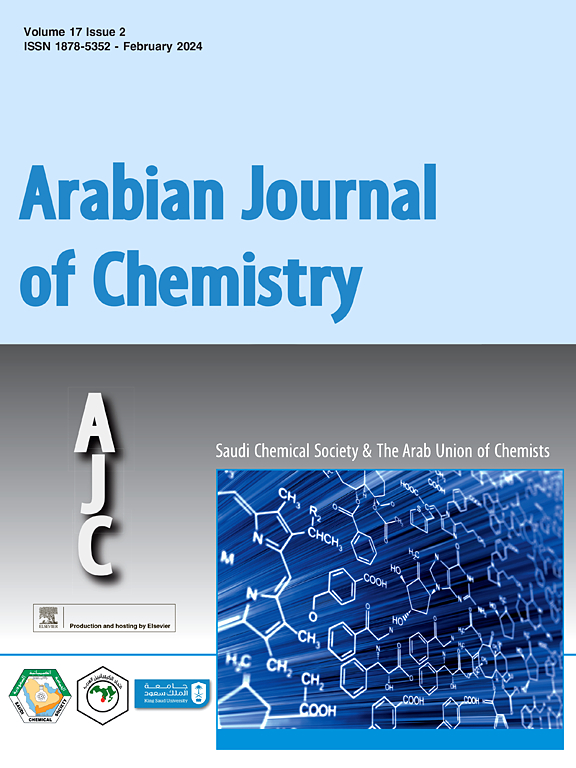Phytochemical composition and anticancer effect of Akebia trifoliata seed in non-small cell lung cancer A549 cells
IF 5.2
2区 化学
Q2 CHEMISTRY, MULTIDISCIPLINARY
引用次数: 0
Abstract
Background
Akebia trifoliata is a widely distributed medicine and food homology plant. Its fruit is used to treat tumors and the seed’s weight proportion exceeds 50%. However, the anti-tumor effect of A. trifoliata seed remains poorly studied.
Methods
UHPLC-Q-Orbitrap-MS was used to identify the chemical components of A. trifoliata seed water extract (WE) and ethanolic extract (EE), and their cytotoxicity was evaluated using MTT assay. Further, colony formation and cell cycle assays examined the anti-proliferative effect of A. trifoliata seed EE. Next, morphology observation, AO/EB staining, Hoechst 33,258 staining, Annexin V-PE/7-AAD staining, and JC-1 assays were employed to detect apoptosis. The influence of A. trifoliata seed EE on A549 cell metastasis was assessed by wound healing and transwell invasion tests. In addition, western blotting and network pharmacology were applied to further analyze its anticancer mechanism.
Results
Eighty-two components were characterized from the A. trifoliata seed WE and EE. For anticancer activity, A. trifoliata seed EE exhibited high cytotoxicity against cancer cells A549 (IC50: 52.38 ± 1.04 μg/mL) and NCI-H1299 (IC50: 70.29 ± 0.58 μg/mL) and revealed low cytotoxicity against non-cancer cells MRC-5 (IC50: 101.28 ± 2.84 μg/mL) and L929 (IC50: 113.44 ± 0.55 μg/mL). A. trifoliata seed EE suppressed A549 cell proliferation by inducing S-phase arrest via down-regulation of CDK2 and p21 as well as up-regulation of cyclin E1 and E2. It increased the Bax/Bcl-2 ratio, reduced mitochondrial membrane potential (ΔΨm), activated caspase-9 and caspase-3, cleaved PARP, and triggered apoptosis through the mitochondrial pathway. Besides, it repressed migratory and invasive ability by reducing MMP-2, MMP-9, and N-cadherin levels.
Conclusion
A. trifoliata seed EE exhibits outstanding anticancer properties and has the exploitation potential as an anticancer drug in the pharmaceutical industry.
三叶金雀花种子的植物化学成分和对非小细胞肺癌 A549 细胞的抗癌作用
背景Akebia trifoliata是一种分布广泛的药食同源植物。其果实可用于治疗肿瘤,种子的重量比例超过 50%。方法采用UHPLC-Q-Orbitrap-MS鉴定三叶金雀花种子水提取物(WE)和乙醇提取物(EE)的化学成分,并采用MTT法评估其细胞毒性。此外,菌落形成和细胞周期试验也检验了三叶青种子乙醇提取物的抗增殖作用。然后,采用形态学观察、AO/EB 染色、Hoechst 33,258 染色、Annexin V-PE/7-AAD 染色和 JC-1 试验来检测细胞凋亡。三叶青种子 EE 对 A549 细胞转移的影响通过伤口愈合和跨孔侵袭试验进行评估。结果 表征了A. trifoliata种子WE和EE中的两种成分。在抗癌活性方面,A. trifoliata种子EE对癌细胞A549(IC50:52.38 ± 1.04 μg/mL)和NCI-H1299(IC50:70.29 ± 0.58 μg/mL)表现出较高的细胞毒性,而对非癌细胞MRC-5(IC50:101.28 ± 2.84 μg/mL)和L929(IC50:113.44 ± 0.55 μg/mL)则表现出较低的细胞毒性。A. trifoliata种子EE通过下调CDK2和p21以及上调细胞周期蛋白E1和E2,诱导S期停滞,从而抑制A549细胞增殖。它提高了 Bax/Bcl-2 比率,降低了线粒体膜电位(ΔΨm),激活了 caspase-9 和 caspase-3,裂解了 PARP,通过线粒体途径引发细胞凋亡。结论A. trifoliata 种子 EE 表现出卓越的抗癌特性,具有作为抗癌药物在制药业开发的潜力。
本文章由计算机程序翻译,如有差异,请以英文原文为准。
求助全文
约1分钟内获得全文
求助全文
来源期刊

Arabian Journal of Chemistry
CHEMISTRY, MULTIDISCIPLINARY-
CiteScore
10.80
自引率
3.30%
发文量
763
审稿时长
63 days
期刊介绍:
The Arabian Journal of Chemistry is an English language, peer-reviewed scholarly publication in the area of chemistry. The Arabian Journal of Chemistry publishes original papers, reviews and short reports on, but not limited to: inorganic, physical, organic, analytical and biochemistry.
The Arabian Journal of Chemistry is issued by the Arab Union of Chemists and is published by King Saud University together with the Saudi Chemical Society in collaboration with Elsevier and is edited by an international group of eminent researchers.
文献相关原料
公司名称
产品信息
索莱宝
MTT solution
索莱宝
4 % paraformaldehyde
阿拉丁
cisplatin
 求助内容:
求助内容: 应助结果提醒方式:
应助结果提醒方式:


